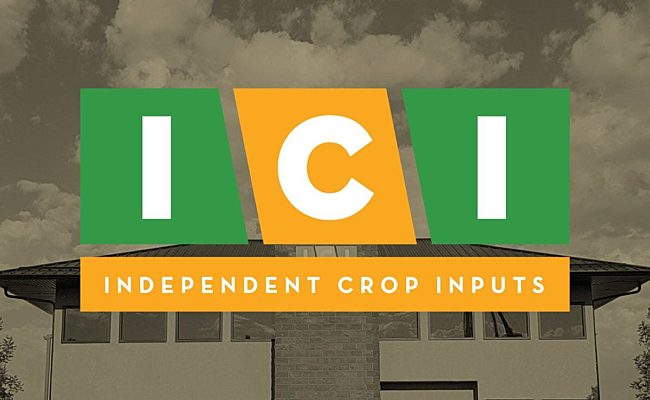
Profitable Potato Farming
When it comes to profitable potato farming, there are certain things a producer can’t control — like weather and markets — but there are also plenty of things he can.
From the quality of seed; to the choices he makes about irrigation, pest control, and storage; and even the plant nutrition plan he implements, there are tiny steps throughout the year that add up to big results. We know that in general, a healthier plant is better able to resist diseases and pests, and plant nutrition plays an important role in good plant health. Whether it’s added potassium or calcium to prevent hollow heart or a sulfur application to ward.
Potassium
Potatoes use more potassium than any other nutrient – including nitrogen. Potassium (K) is required for nutrient movement in the potato plant. It is essential for the makeup of over 40 different enzymes and is involved in more than 60 different enzyme systems in plants. Potassium is also important in the formation of sugars and starches in plants. All crops that produce a large amount of carbohydrates (sugars) such as cotton, almonds, alfalfa, grapes, cherries, peaches, and especially potatoes, require large amounts of potassium. Specifically in potatoes, potassium influences tuber size, specific gravity, susceptibility to blackspot bruise, after-cooking darkening, reducing sugar content, fry color, and storage quality.
Potassium is crucial in quality potato formation as it promotes synthesis of photosynthates and their transport to the tubers. This enhances their conversion into starch, protein and vitamins. A deficiency of potassium affects many metabolic processes, like the rate of photosynthesis, the rate of translocation and enzyme systems. At the same time, the rate of dark respiration is increased. The result is a reduction in plant growth and in crop quality. K influences on quality can also be indirect as a result of its positive interaction with other nutrients (especially with N). Potassium is also used by plants to regulate the process of opening and closing the stomatal openings of their leaves. That process influences water use efficiency and carbon dioxide use in the plant. Potassium’s influence on cell turgor pressure and water relations in the plant helps the plants resist the effects of drought and temperature extremes, and aids resistance to many plant diseases
Depending on soil type, 90-98% of total soil potassium is unavailable. Feldspars and micas are clays that contain large amounts of potassium, but plants cannot use the nutrient if it is trapped between the layers of those clays. In persistently dry soils, potassium remains unavailable, as there is no water film surrounding the soil particles. Over time, these minerals break down, and the potassium is released. However, this process is too slow to provide crops the amount of potassium needed for optimal yield.
Plants lacking in potassium often display various signs of deficiencies, the most common being discoloration of the older leaves on the plant as compared to the younger leaves on the plant. The stem on affected tissue usually appears weak and is slender in size compared to healthy tissue. Other deficiency signs include inward curling of leaves, discolored leaf tips and marginal scorching. Another common sign of potassium stress is abnormally short internode length. A crop deficient in potassium may also display signs of various crop diseases.
As an essential major nutrient for crop production, potassium needs to be available to the plant at all stages of growth. Most potassium found in soils is unavailable to the plant, therefore the nutrient may need to be supplied to the crop via fertilizer.
The need for potassium can and should be determined from soil and plant tissue analysis. Management recommendations for potassium in potato crops vary by region and specific soil conditions. It is often beneficial to split applications of potassium to match the optimal times of plant uptake in order to increase yield potential and quality. Proper potassium management can increase disease and pest resistance. In addition, this management practice can improve soil quality for sustainability, resulting in an overall increase in productivity.
Calcium
Calcium is involved in both the structure and function of all plant cell walls and membranes. In potatoes, inadequate levels of calcium cause growth abnormalities like internal brown spot and hollow heart. Adequate levels of calcium can also improve skin color, reduce blackspot bruising and soft rot. In addition, sufficient calcium levels can help a plant react to the impact of environmental pressures, such as heat, cold or drought and bacteria or fungal stresses. Because on a cellular level, calcium is able to protect cell membranes and gives strength to the cell walls, it plays an important role in plant health, growth and tuber quality.
Calcium moves within the plant by transpiration, therefore moving with water in the xylem. Potato tubers have much less transpiration than the above-ground part of the plant. Therefore, tubers accumulate much less calcium per unit than the leaves of the same plant. It follows that if tubers have available calcium in the soil, they can extract the nutrient more readily than if it is foliar applied.
Sulfur
Sulfur is crucial to healthy crop development. It is found in amino acids that make up plant proteins. It also helps develop vitamins and enzymes. A lack of sulfur results in small, slow-growing plants. There is evidence that suggests sulfur applied in-furrow can substantially decrease common scab and black scurf infection in the tubers. Sulfur is most available in the soils with a pH higher than 6.0. With potato production often in soils with a pH less than 5.3, while sulfur may be present in the soil, it may not be available to the plant.
For more information, contact
Dan Peterson
Field Agronomy Manager for AgroLiquid
(262) 339-6843 or [email protected]
Next up in our News and Blog

ICI’s Fourth Location: A Joint Venture with South West Terminal
ICI and South West Terminal Ltd. to form Joint Venture to operate at SWT’s Whitla, Alberta facility.

Independent Crop Inputs partners with Lethbridge & District Exhibition on naming opportunity in Agri-food Hub & Trade Centre
The Independent Crop Inputs (ICI) Meeting Suite is a premier meeting space in new state-of-the-art venue.